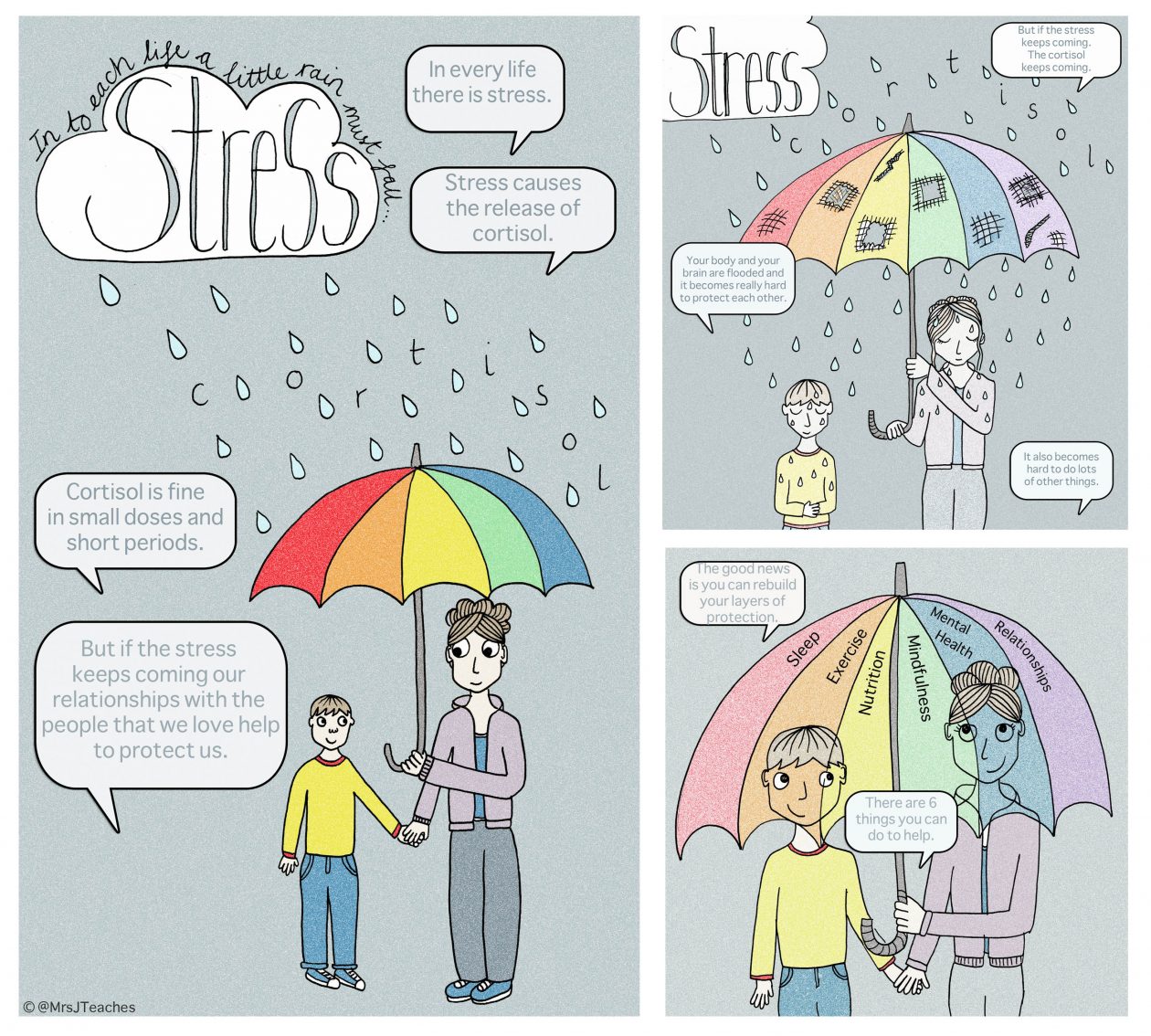
I recently read two BRILLIANT books about the effects of early and extreme stress on the bodies and brains of young children and how we as practitioners can help children and families to overcome these effects and enable children to flourish. The first was The Boy Who Was Raised as A Dog by Bruce Perry and the second was The Deepest Well by Nadine Burke Harris.
In spite of the, sometimes crushingly sad, stories contained within both of these books I found both of them incredibly hopeful and beautiful as both authors have spent their entire careers seeking, and in many cases finding, solutions and ways to repair damage and enable children to reach their potential. I started to think about how the ideas contained within The Deepest Well and that sense of hopefulness and positive change could be represented visually and I have created 2 versions of an illustration which I hope goes some way toward that goal.
The two versions feature children of different ages – one of primary/elementary age and the other a teenager.
I have had a number of requests to make these available for download and I am happy to do so.
Please credit me whenever they are used.
Click on the image below and follow the link to download full size files.


Thank you so much to those who took the time to read about our Once Upon A Time project and tweet me / message me about it. It was great to receive such a supportive and positive response to the idea.
I wanted to take a moment to update you on the progress of the project and offer some more information to those who are thinking about doing something similar.
Firstly here is a link if you want to download the story map template – click here Once Upon A Time Map. We usually print it out at A3 for mapping stories and write directly on it.
Secondly I wanted to review our progress against our intended outcomes:
Intended Outcomes as stated in the last post:
- Every child in P1 will have experienced a rich array of ‘classic’ and new, high quality picture books. We have now almost completed our original list of 25 books – the children were always very keen to tell us if they had seen on heard a particular book before and this only happened on a handful of occasions so I feel confident that we have given the majority of children the experience of a superb array of books which they had not had contact with before. We are shortly going to be asking the children to vote on their favourites and let us know which stories have stayed with them. More on this in my next post.
- Every child will understand that a story has a beginning, middle and an end. This has absolutely been achieved – they know as soon as the ‘wiggly line’ comes out that we will be talking about the shape of the story and they know that every story has these parts. We have also used the story mapping model to investigate other stories such as ‘Smartie the Penguin’ for safer internet day, and ‘Gorilla Loves Vanilla’ as part of our Book Week Scotland celebrations.


- Children will be able to listen to a story and recall what happened at the beginning, middle and end. We have nearly 100 Once Upon A Time maps to evidence development in this area. At the start of the project many children would just tell you the last thing that they recalled about the story which would often be events at the very end. The children are now able to cognitively sequence the information and tell you things which happened at each point in the story – you can see this on the maps as we number each contribution to indicate which ideas were shared first, second, third etc.

- There will be an improvement in children’s ability to generate their own 3-part stories – assessed by ‘cold writing’ pieces throughout the year and compared to the baseline from the start of P1. This element of the project has actually become Once Upon A Time PART 2! We are now using the Once Upon A Time story map template as the planning format for all of our writing lessons. In order to reinforce the idea that stories have a beginning, a middle and an end the children are planning their own story writing using that familiar template to encourage the creation of three-part narratives. We are also making the template available at the writing table so children can plan their own stories independently in that format. The three part structure is clearly evident in all of the stories that the children tell.


Creative ideas across the curriculum.








